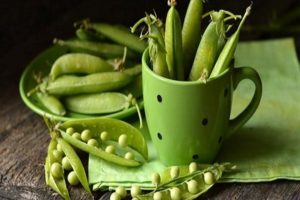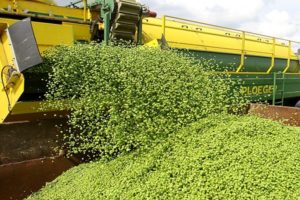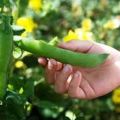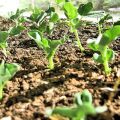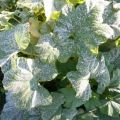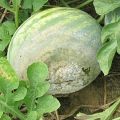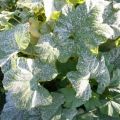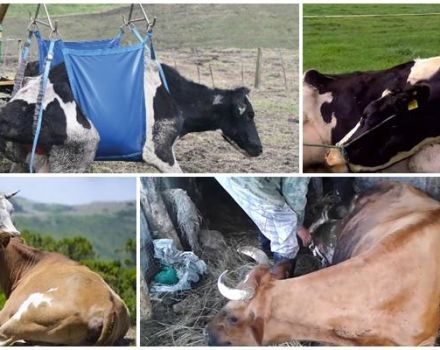Description and treatment of pea diseases, pest control measures
Growing peas many gardeners are engaged in, who like to grow various vegetables on their plots. If you do not follow all agrotechnical rules when growing this plant, then pests and diseases of peas will certainly appear, which can lead to the death of the bushes. Therefore, before proceeding with planting this plant, you should familiarize yourself with the main pests and the features of their elimination.
Pests
Most often, vegetable growers are worried about pea pests, which prevent the bushes from growing and developing normally. If insects are not detected on the seedlings in a timely manner, the seedlings will gradually die and it will not be possible to harvest them from them. Therefore, it is recommended that you familiarize yourself with the most common pests and measures to combat them in advance in order to timely identify harmful insects on the bushes and get rid of them.
Pea aphid
Pea plants often suffer from aphids, which quickly spread to most of the bushes on the site. It is quite simple to identify this insect, since the pea aphid is considered the largest pest. Its dimensions are about 5 mm, and the wingspan is 10–12 mm.
Harmful insects seriously damage plants, especially in dry weather. They feed on pea juice and leave small wounds on the surface of the leaves, in which fungal diseases gradually develop. Aphids often attack peas during the budding period, which causes the plant to weaken.
To get rid of the pest, all the bushes are treated with special agents. To combat aphids, drugs such as Fastak or Iskra are used.
Pea weevil
Caryopsis or bruchus is quite common on peas. This insect is widespread in most countries. However, most often plants growing in America, Africa, Asia and Europe suffer from the effects of this pest. In our country, a caryopsis appears on bushes only during severe drought and in the complete absence of rain.
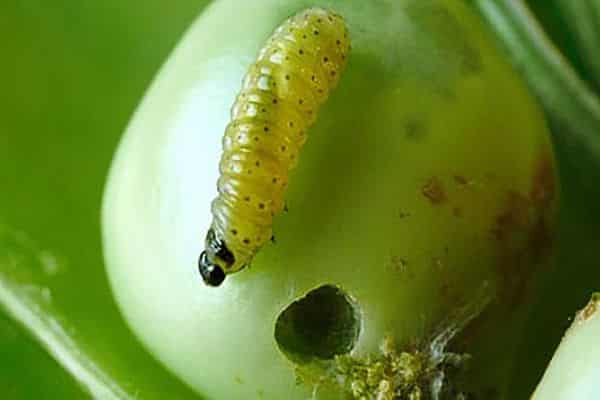
Peas suffer from weevil at the time of flowering of seedlings. The pest penetrates the flowers of the plant and feeds on its pollen. It is necessary to fight the insect immediately, as it spreads to all pea bushes within 5-6 days. To quickly get rid of pests on seedlings, you will have to treat them with a solution of table salt.
Pea moth
This insect often appears on pea bushes and feeds on its leaves. The insect is quite large, as its wingspan is 15 mm. Upon contact with plants, the female lays eggs on the leaves.The eggs laid on the leaves are oval and about 1 mm long. Over time, light yellow caterpillars emerge from the eggs, which grow up to 10 mm in length. If you do not get rid of insects in a timely manner, the deposited larvae completely eat up all the leaves.

When fighting a pest, mineral and organic fertilizers are added to the soil to make the plant stronger. Spraying is also carried out with a preparation made of tobacco, ash and celandine.
Nodule weevils
Nodule weevils often appear on legumes to feed on their leaves. They attack plants in the early spring days to recover from hungry winter days. To identify this pest, you will have to pay attention to the condition of the bushes. After the appearance of the insect, gnawed areas appear on the leaves of the plant. On the first day, there will not be many such sites. However, over time, the leaves will begin to disappear completely, since the weevil is able to eat 1–2 cm of the leaf per day.
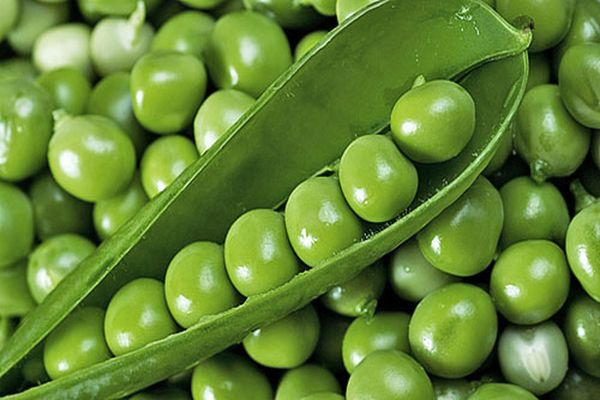
It is recommended to get rid of the weevil pest immediately after it appears. For this, all pea bushes are treated with ash, tobacco dust and other deterrent agents.
Colorado beetle
Another pest that damages many different plants is the Colorado potato beetle. It is very easy to notice this beetle on the bushes, since it has a bright yolk color, which stands out against the background of green leaves. When in contact with bushes, adults lay eggs, which begin to feed on leaves. If eggs are found on the sheets, you should immediately get rid of them and treat the bushes with protective agents from pests.

Umbelliferae
Buckworm is a small yellow insect that often appears on pea bushes. Such pests immediately penetrate the leaf tissue and feed on them. Because of this, the leaves stop growing, gradually deform and dry out.
If you do not get rid of the lice, the bushes will dry out and also stop growing. Therefore, after the appearance of an insect, it is recommended to immediately treat the bushes with ash or celandine.
Pea scoop
Not only peas, but many other plants are affected by the pea scoop. This butterfly is distinguished by its size, which with a wingspan reaches about 30–35 mm. When in contact with plants, adults lay larvae on the leaves that feed on pea juice.
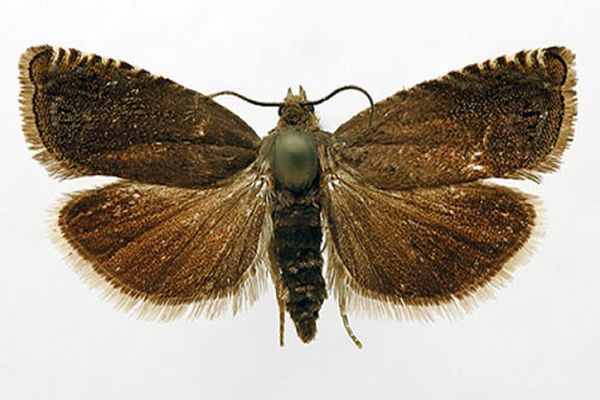
To combat insects, biological products and insecticides are used, which will quickly clear the seedlings from pests.
Diseases
In addition to pests, there are also pea diseases, which often lead to the death of bushes. There are many dangerous diseases, which should be familiarized in more detail before planting and growing legumes.

Ascochitosis
Pea plants often suffer from dark-spotted or pale-spotted ascochitis. It is quite simple to identify the presence of this disease, since it has pronounced symptoms. When the disease appears, all leaves have a yellowish color, which eventually becomes dark gray. In the absence of measures to combat ascochitosis, all pea leaves will dry out and cease to function.
To get rid of the disease, the affected plants will have to be periodically treated with a solution of bleach.
Rust
Pea rust is a common problem faced by all legume growers. Plants often suffer from this disease during the budding period, when flowers begin to bloom on the bushes. Also, the development of the disease is facilitated by high humidity and therefore it appears more often with heavy rainfall. In drought conditions, pathogens do not develop.
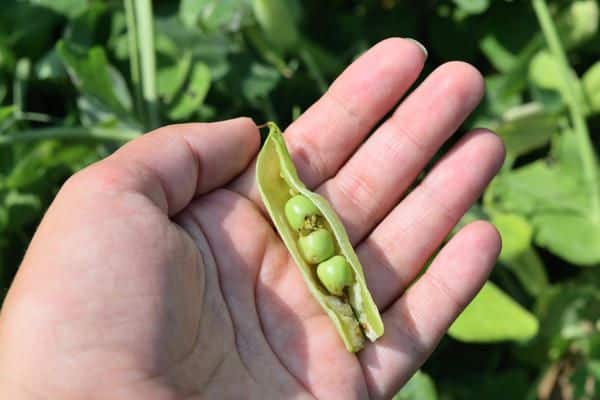
Rusted stems must be burned so that the disease does not spread to healthy bushes.
Peronosporosis
In springtime, legumes often suffer from downy mildew. When the disease appears, almost all organs of the bushes are affected. However, the leaves suffer the most, on which yellowish specks appear. If the disease appears during the period of fruit ripening, then the lesion of the legume valves develops. White spots and spores of the causative agents of peronosporosis appear on them.
Peronosporosis of peas is treated with a sulfuric solution prepared from one hundred grams of the substance and ten liters of water. The bushes are treated with the prepared product three times a month.
Anthracnose
Pea anthracnose is considered a dangerous disease that often leads to the death of bushes. The disease affects all ground parts of the seedlings and therefore everyone can detect signs of anthracnose. The leaves are covered with brown and gray spots of various shapes. In the central part of the spots, reddish pads with fungal spores appear.
It is impossible to cure the plant from anthracnose, and therefore all affected bushes are burned to prevent the spread of the disease.
Fusarium
Fusarium pea often affects bushes if agronomic rules are not followed during their cultivation. When the disease appears, root rot appears, due to which the bushes gradually die. Also, pea fusarium is accompanied by wilting of leaves. At first, the affected leaves simply turn yellow, but over time they dry out and completely fall off the plants.
To protect peas from fusarium root rot, it is recommended to regularly cleanse the garden from plant residues and observe the correct crop rotation.
Powdery mildew
Powdery mildew on peas is considered the most common fungal disease, which often destroys the entire crop. When the disease appears, stipules and leaves of bushes are affected. Over time, powdery mildew on peas reaches the peas, on the surface of which a grayish white bloom appears.
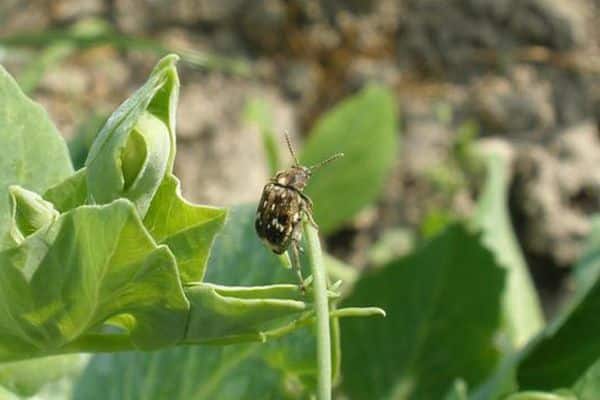
In order not to face this ailment, it is recommended to plant pea varieties with resistance to powdery mildew pathogens in the garden.
Rot
Mushrooms from the Fusarium genus often cause gray or white rot on pea bushes. The disease spreads to the root collar and roots of plants, because of which they rot and gradually die off. Sometimes rot also spreads to the ground leaves of the bushes. In this case, a bloom of white or pinkish appears on them.
It is better to get rid of the affected plants immediately before the rot begins to spread to the nearest healthy bushes.
Seed protection
So that the plant does not suffer from diseases or pests in the future, you should start processing the seed in advance.

To protect the seeds, experienced vegetable growers recommend dressing the seeds, which consists in treating them with special pesticides. This is one of the most effective methods of protecting plants from most harmful insects and diseases. The pesticides will cleanse the seeds from internal and external infections that can become active after planting.
Most growers prefer dry pickling as it is the easiest method. In this case, before processing, all the seed is dried in advance. The disadvantages of dry etching include uneven application of pesticide seeds to the surface.
Pea protection
The main method of protecting pea bushes from diseases and dangerous insects is compliance with all rules of agricultural technology when growing a plant. The main agrotechnical methods include a soil cultivation system, observance of crop rotation, clearing the site of weeds, watering plants and timely harvesting. Therefore, when growing legumes, it is necessary:

- Grow pea seedlings in vegetable gardens cleared of weeds and other plant debris.
- Timely add organic or mineral fertilizers to the soil, which will increase resistance to fungal diseases and pests.
- Properly care for the soil in the garden. In this case, the gardener must harrow the site in the spring and dig it up. This will enrich the soil with air and useful trace elements.
- Plant only high-yielding varieties that are resistant to most common diseases.
Conclusion
Most gardeners are faced with pests and diseases when growing legumes. In order to get rid of them in a timely manner, it is recommended that you familiarize yourself with the features of their manifestation and how to eliminate them.
